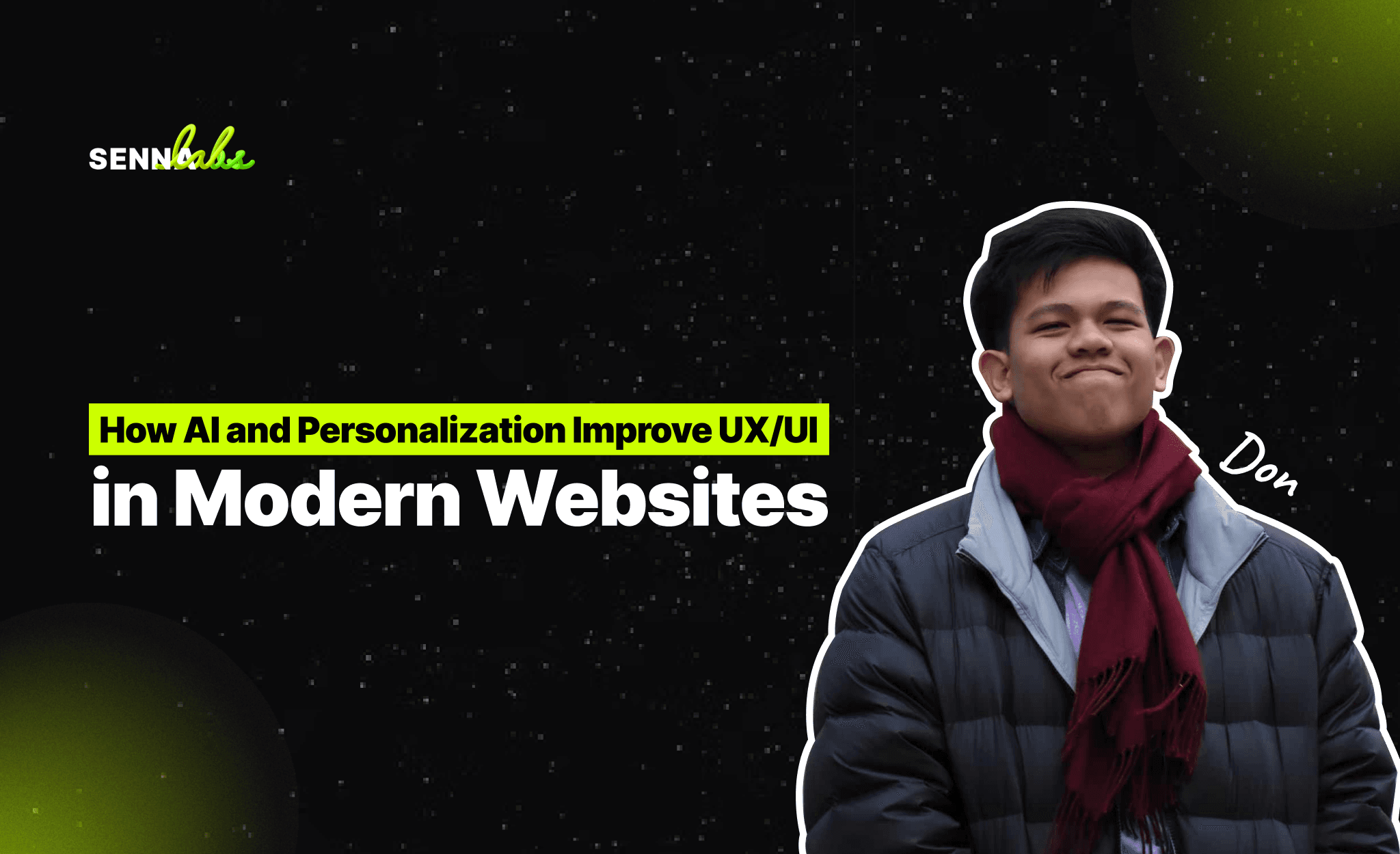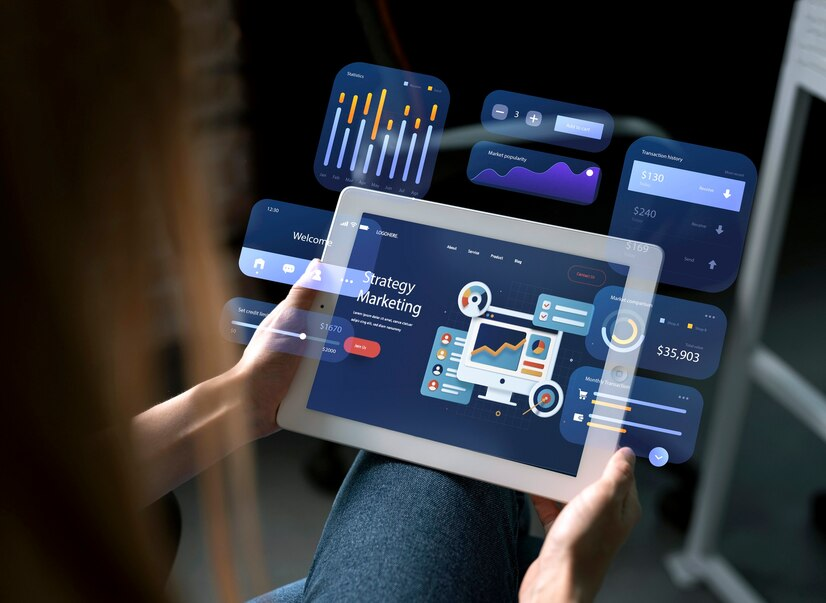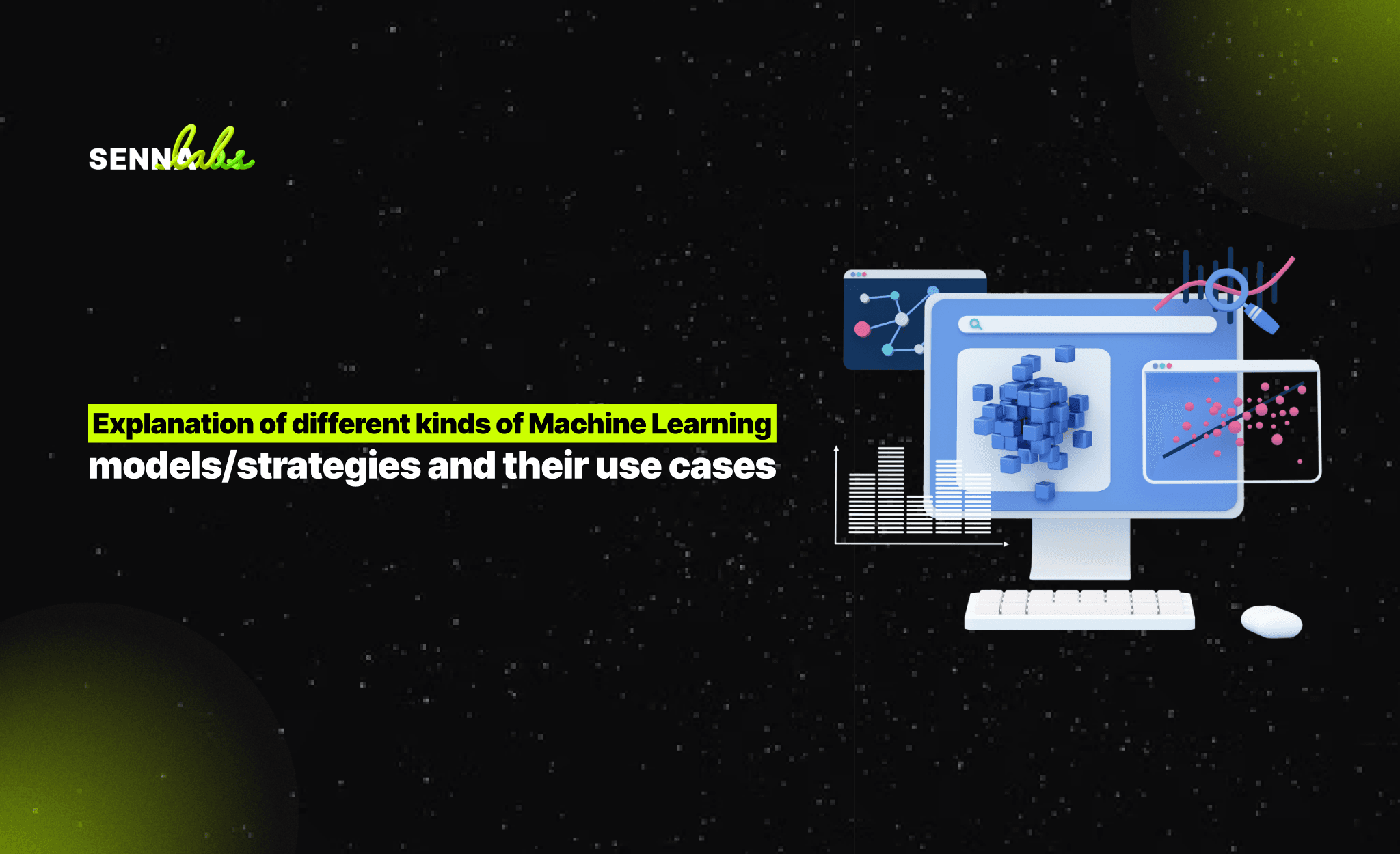How AI and Personalization Improve UX/UI in Modern Websites
Share

As digital experiences evolve, Artificial Intelligence (AI) and personalization have become critical components of modern UX/UI design. Users expect websites and applications to anticipate their needs, offer tailored content, and streamline their interactions. When done effectively, AI-driven personalization enhances usability, increases engagement, and improves user retention.
However, poorly implemented personalization can overwhelm users with irrelevant content or create a disjointed experience. This article explores how AI and personalization improve UX/UI in modern websites, using a video streaming platform as a case study to demonstrate the impact of AI-driven recommendations.

1. Case Study: A Video Streaming Platform Enhanced Personalization
A leading video streaming service found that users:
-
Struggled to find content they liked, leading to lower engagement.
-
Spent too much time searching manually instead of watching recommended content.
-
Frequently abandoned the platform when they couldn’t discover relevant shows or movies.
UX/UI Changes Implemented
To enhance content discovery, the UX/UI team introduced:
-
AI-driven recommendations based on users’ viewing history.
-
A personalized homepage layout tailored to individual preferences.
-
Dynamic search and filtering options to improve content discovery.
Results:
-
Content consumption increased by 35%.
-
User retention improved by 25%.
-
Manual searches decreased as users found relevant content faster.
2. The Role of AI in UX/UI Personalization
Why AI-Driven Personalization Matters
AI analyzes user behavior and preferences to deliver personalized experiences. This creates:
-
More relevant recommendations, reducing time spent searching.
-
Higher engagement, as users interact with content they care about.
-
Better user retention, leading to long-term platform loyalty.
AI Techniques Used in UX/UI Personalization
-
Machine Learning Algorithms
-
AI learns user behavior and suggests relevant content based on patterns.
-
Natural Language Processing (NLP)
-
Enables better search results and smarter chatbots.
-
Predictive Analytics
-
Anticipates user needs based on past interactions.
-
Computer Vision
-
Analyzes images and videos to improve content tagging and recommendations.
3. Enhancing Content Discovery with AI-Powered Recommendations
The Problem with Manual Content Browsing
-
Users become frustrated when they can’t find what they want.
-
Scrolling through large content libraries takes too much time.
-
Irrelevant recommendations reduce engagement and satisfaction.
AI Solutions for Better Content Discovery
-
Personalized Homepage Layouts
-
Content sections change dynamically based on user preferences.
-
Smart Content Categorization
-
AI groups content into meaningful categories, such as "Trending for You" or "Because You Watched."
-
Real-Time Adaptive Suggestions
-
As users interact with content, recommendations update dynamically.
Outcome: Users find relevant content faster, leading to higher engagement and platform loyalty.
4. Optimizing UX/UI Through Dynamic Search and Filtering
Common Search and Filtering Issues
-
Users often type vague queries, leading to irrelevant search results.
-
Traditional filtering systems require too much manual input.
-
Results aren’t personalized, forcing users to scroll through unnecessary options.
AI-Powered Search Enhancements
-
Auto-Suggestions & Predictive Search
-
AI predicts user intent and suggests relevant queries.
-
Voice and Visual Search
-
Users can search using spoken commands or images.
-
Personalized Filters
-
Filters adjust dynamically based on user behavior.
Outcome: Faster, more accurate search results that align with user intent.
5. Creating a Seamless UX with Adaptive UI Elements
Challenges in Static UI Design
-
One-size-fits-all layouts don’t accommodate user preferences.
-
Static interfaces can’t adapt to different user behaviors.
-
Lack of customization reduces engagement.
How AI Enhances UI Adaptability
-
Dynamic UI Components
-
AI adjusts content layout based on user habits.
-
Theme and Mode Customization
-
Automatic dark mode or high-contrast themes for accessibility.
-
Context-Aware UI Adjustments
-
AI adapts navigation based on frequently used features.
Outcome: A responsive and intuitive interface tailored to individual users.
6. Summary: How AI and Personalization Improve UX/UI
Key Takeaways
-
AI-powered recommendations help users discover relevant content faster.
-
Dynamic search and filtering reduce frustration and improve accuracy.
-
Adaptive UI elements enhance engagement and accessibility.
-
Personalized homepages create a seamless user journey.
Conclusion
AI-driven personalization is transforming modern UX/UI, making websites more intuitive and user-friendly. When implemented correctly, AI enhances user engagement, improves content discovery, and fosters long-term loyalty. Businesses that leverage AI for personalization will continue to offer superior digital experiences that keep users coming back.

Share

Keep me postedto follow product news, latest in technology, solutions, and updates
Related articles
Explore all


